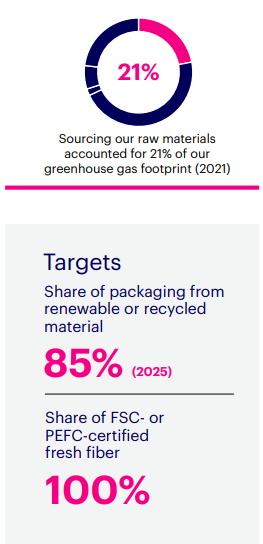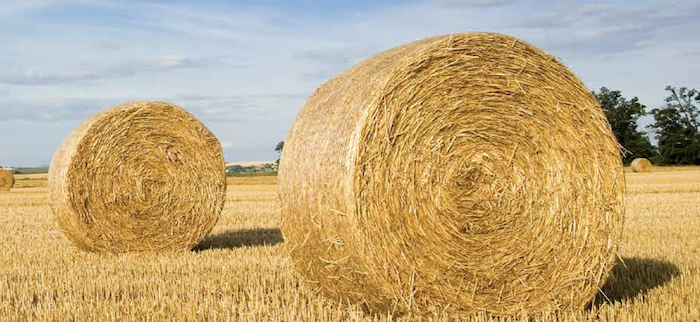SOURCE: Essity
DESCRIPTION:
Raw material accounts for a fifth of Essity's emissions. On the journey to net zero, we work to identify and shift to low-carbon materials. At the same time, we act to mitigate deforestation and increase biodiversity.
The largest share of the emissions from sourced raw materials is derived from the fresh fiber, plastics and pulp that we use for our products and packaging. We work closely together with our suppliers to reduce the footprint of sourced materials. This includes encouraging adoption of targets according to SBTi, increase the use of renewable energy and promoting sustainable innovations related to sourced raw materials and packaging. We invest in machinery that enables processing alternative raw material with a lower carbon footprint.
Increasing renewable and alternative materials
In our efforts to reduce our greenhouse gas emissions, we are increasing the share of recycled and renewable materials as well as introducing alternative materials. Renewable materials include responsibly sourced fresh fibers, recycled fibers and alternative fibers such as wheat straw. We are also increasing the share of renewable or recycled plastics in our packaging. An important milestone was the investment of approximately EUR 11m in our Hondouville mill in France, allowing it to extract 98% of paper fibers contained in food and beverage cartons.
Fighting deforestation and forest degradation
Ensuring the health of the world’s forests will play a key role in reducing greenhouse gas emissions globally. To ensure that all woodbased fresh fiber used in an Essity product or packaging comes from responsible forestry, we only source certified fiber in accordance with the Forest Stewardship Council (FSC) or the Programme for the Endorsement of Forest Certification (PEFC). These schemes give special attention to protecting the function of forests as net removers of CO2 from the atmosphere. We invest in concrete projects to strengthen sustainable forest management and prevent deforestation. To act against global deforestation, we take part in global forums, such as the Consumer Goods Forum (CGF) Forest Positive Coalition of Action.

Our calls for action to policymakers
We need policymakers to support the green transition by:
- Applying life cycle assessments, standards and harmonized labeling to stimulate demand for low-carbon options.
- Recognizing certification systems, such as FSC and PEFC, in policy development to secure a credible chain of custody for renewable materials.
- Promoting well-functioning markets for secondary raw materials.
Tissue made from agricultural by-products
At Essity, we develop innovative materials for our products to reduce the climate impact in our value chain. In 2021, our mill in Mannheim, Germany, was the first integrated tissue mill in the world to start large-scale production of tissue from wheat straw, an agricultural by-product that often remains unused.
The wheat straw grows in close proximity to the mill which reduces the need for import and long distance transportation of wood-based pulp.

On our journey to net zero, we will start up and scale production of alternative materials, adapted for the specific prerequisites at our various production sites.
Learn more about Essity's Journey to Net Zero here
Download Essity's Journey to Net Zero report here
KEYWORDS: OTC:ESSYY, Essity

![]()
![]()







